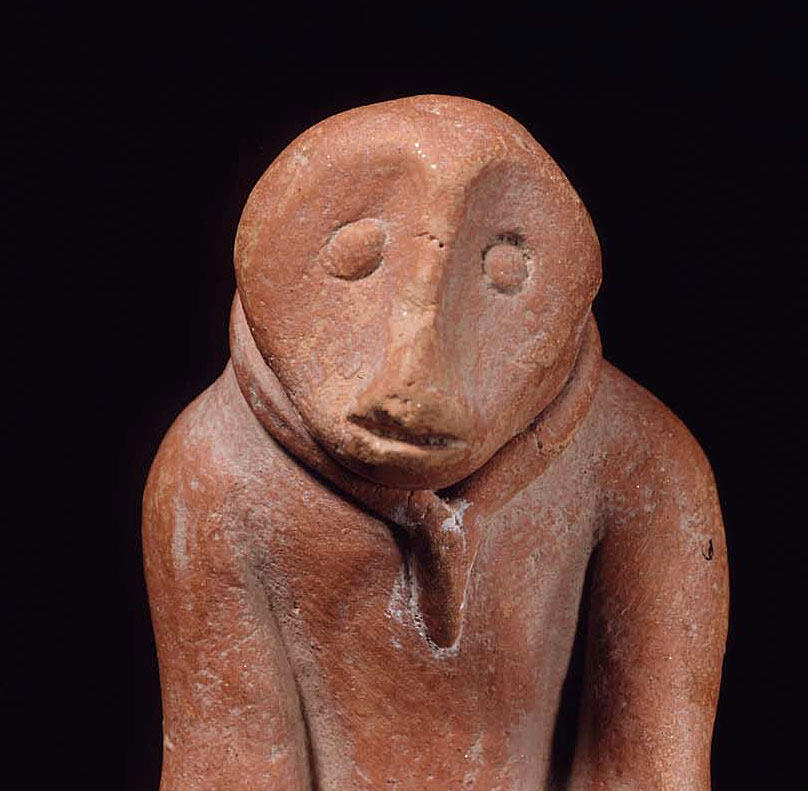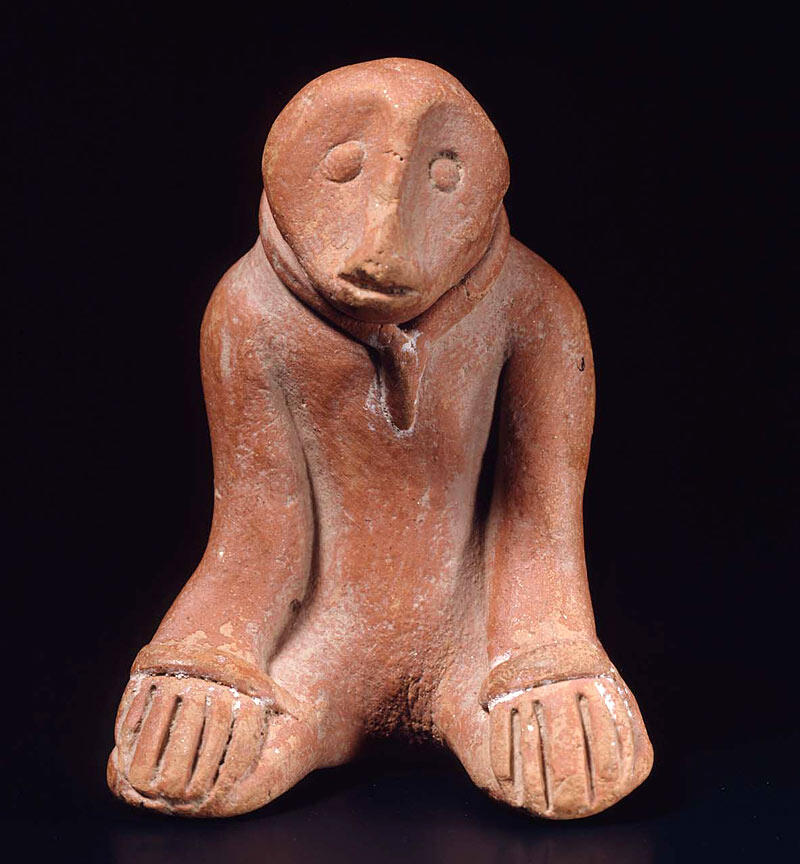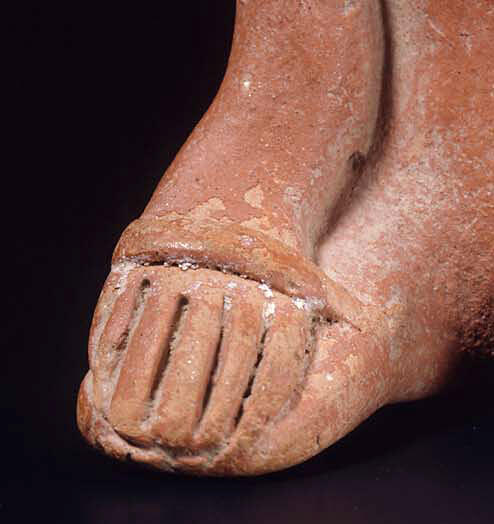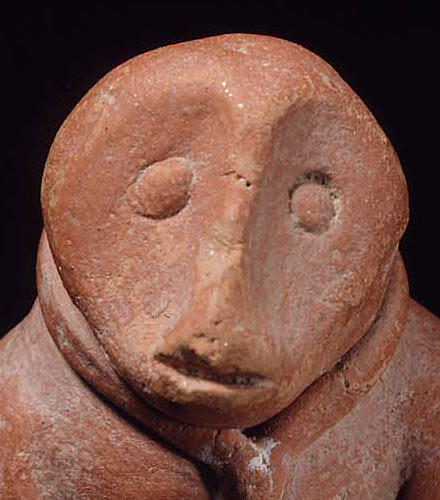April 1st, 2017
Monkey from Chanhuyin Jo Daro [Chanhudaro]
"Pet monkeys were also probably a common sight in the bazaars or neighborhood markets," writes Mark Kenoyer. "Figurines of monkeys were were made of terracotta or glazed faience depicting one or more monkeys in various amorous of acrobatic poses. All the monkey figurines are of the short-tailed rhesus or macaque species, but the kong-tailed langurs would have been known to the Indus people living in Gujarat and the northern Punjab, because this species is quite common throughout these regions today. The fact that they did not make any figures of the long-tailed monkeys is quite intriguing, and it is also odd that no monkeys are illustrated on the seals or narrative tablets. The Harappan bias against depicting monkeys in glyptic art is one of the more important differences with later Hindu art, where monkeys are a common motif and the long-tailed langur is directly associated with the deity Hanuman."
Jonathan Mark Kenoyer, Ancient Cities of the Indus Valley Civilization, p. 131.
Indus Valley Culture
Prehistoric
about 2400–1750 B.C.
Thanks to: Joint Expedition of the American School of Indic and Iranian Studies and the Museum of Fine Arts, 1935–1936 Season
Overall: 4.1 x 3 cm (1 5/8 x 1 3/16 in.)








